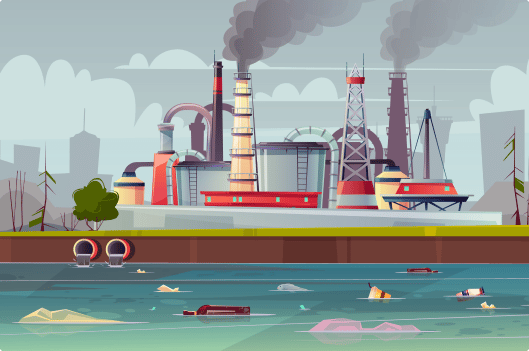Home » Toxic Exposure in the Military » Red Hill Water Contamination
Red Hill Water Contamination
In 2021, jet fuel leaked from the Red Hill Bulk Fuel Storage Facility, contaminating local water supplies for the island of Oahu and Joint Base Pearl Harbor-Hickam. Thousands of civilians and military service members have been affected, reporting health problems ranging from child loss, renal failure, seizures, brain injury, and the death of pets.
While the government has publicly accepted responsibility for the fuel leak, lawsuits pressure the Navy to compensate victims of the Red Hill water contamination for their injuries and distress.
In 2021, freshwater aquifers and government-operated wells for the island of Oahu were contaminated by a nearby fuel leak at the Red Hill Bulk Fuel Storage Facility.
As a result, the water supply for millions—including thousands of military service members and families stationed at Joint Base Pearl Harbor-Hickam—was compromised. Reports of adverse health events including seizures, kidney failure, migraines, burns, rashes, and brain injury began to surface almost immediately.
If you were stationed at Joint Base Pearl Harbor-Hickam before or after the Red Hill water contamination incident, you may have the right to pursue legal action and demand compensation for your injuries and suffering.
On This Page
- What is the Red Hill water contamination incident?
- Understanding the Health Effects of Red Hill Water Contamination
- What has the government done to address contaminated water at Red Hill?
- What can I do if I have been exposed to contaminated water at Red Hill?
- Are veterans eligible for VA disability benefits for contaminated Red Hill water?
- Red Hill Water Contamination Lawsuits
What is the Red Hill water contamination incident?
To evade air strikes, the United States Navy built the Red Hill Underground Fuel Storage Facility off the coast of Oahu in 1943. The Navy chose the Red Hill location due to its proximity to Joint Base Pearl Harbor-Hickam; it could rely on gravity to funnel fuel to the base.
Unfortunately, the Red Hill Fuel Storage Facility was built 100 feet above a freshwater aquifer, one of the primary sources of potable water for island residents. Pipelines from the facility were also laid close to wells the Navy had dedicated for the military’s drinking water.
2014 Fuel Leak
In 2014, the Red Hill facility leaked about 27,000 gallons of jet fuel, compromising the local water supply and ecosystem. Following an investigation by the Environmental Protection Agency and the Hawaii Department of Health, the Navy agreed to improve the structural integrity and monitoring of the Red Hill Fuel Storage facility.
2021 Fuel Leak
Despite claims by military officials that the Red Hill facility would never leak again, disaster struck in 2021. On May 6, an operator error caused a pipeline in the facility to rupture. Roughly 19,000 gallons of jet fuel leaked as a result.
According to reports, most of the fuel entered a drain in the facility’s fire suppression system. However, ill effects related to oil-contaminated water were described following the event.
On November 20, 2021, the fuel-filled drain line was struck by a train cart, causing a pipe valve to rupture. Fuel from the May 6 leak immediately contaminated the freshwater aquifer and water supply for Joint Base Pearl Harbor-Hickam.
In response to the Red Hill fuel leak, the Department of Health advised Oahu residents and military personnel stationed at Joint Base Pearl Harbor-Hickam to stop using tap water.
At first, the Navy maintained that the drinking supply was perfectly safe. It wasn’t until 12 days after the water supply had been contaminated, on December 2, 2021, that the Navy formally acknowledged the leak.
For perspective, safe limits of petroleum hydrocarbons associated with gasoline and diesel are about 300 parts per billion (ppb) and 400 parts per billion, respectively. Water at the Navy well closest to the Red Hill Fuel Storage Facility tested positive for 20,000 ppb of gasoline petroleum hydrocarbons and 140,000 ppb of diesel petroleum hydrocarbons.
Military housing was evacuated, causing about 4,000 military service members and their families to seek refuge elsewhere.
Reports show that the Navy’s contaminated water supply impacted about 93,000 people. At least 2,000 people reported health issues related to Red Hill water contamination, including 17 who required hospitalization. Children appeared to be particularly harmed by the fuel leak, with 77 percent of those surveyed reporting symptoms of petroleum-contaminated water.
Health problems surged after the November 20 leak, with 86 percent of individuals surveyed reporting at least one new or aggravated health condition since then.
Understanding the Health Effects of Red Hill Water Contamination
Gasoline- and diesel-contaminated water can cause a host of serious health issues. According to a survey conducted by the Centers for Disease Control, the commonly reported illnesses and health problems included:
- Headache
- Fatigue
- Dizziness
- Itchy skin
- Rash
- Burning and skin irritation
- Diarrhea
- Nausea
- Anxiety
Most respondents noted that the onset of their symptoms happened after the Red Hill fuel leak and persisted for at least 30 days.
A lawsuit filed by victims of Red Hill water contamination health conditions claims that the health effects of water contamination at Pearl Harbor are much direr. Cited health problems include:
- Gastrointestinal disorders
- Neurological disorders
- Endocrine disorders
- Vestibular dysfunction
- Hearing loss
- Renal failure and complications
- Tumors
- Lung damage
- Liver damage
- Lesions
- Thyroid problems
- Baby loss

Long-term exposure to fuel can cause significant damage to the body. According to the International Agency for Research on Cancer, a division of the World Health Organization, jet fuel is a Group 3 carcinogen. It is known to cause cancer in animals, though there is insufficient evidence to prove that it causes cancer in humans.
However, jet fuel contains perfluoroalkyl and polyfluoroalkyl substances (PFAS chemicals), benzene, toluene, xylenes, naphthalene, and other volatile chemical compounds, all of which are associated with severe and chronic health problems.
What has the government done to address contaminated water at Red Hill?
Following the 2014 fuel leak, the Environmental Protection Agency and the Hawaii Department of Health conducted a thorough investigation. The Navy entered into an Administrative Order on Consent, in which it agreed to improve leak monitoring systems and the structural integrity of the fuel tanks.
The Navy also agreed to build a secondary containment system or shut the Red Hill Underground Fuel Storage Facility down by 2037, though they have requested an extension until 2042.
Once the terms of the Administrative Order on Consent had been fulfilled, the commander of the Navy Region Hawaii, Robert Chadwick, said “that type of event could not happen again with the procedures we have in place now.”
Unfortunately, the Navy’s efforts failed to take into account human operator errors that could cause fuel leaks, which is precisely what happened in 2021.
What can I do if I have been exposed to contaminated water at Red Hill?
It is important to seek medical attention if you have been exposed to contaminated water at Red Hill. If your injuries are urgent, you can seek treatment at the Tripler Army Medical Center’s emergency room 24 hours a day. You can also make an appointment with your primary care physician through the MHS GENESIS Patient Portal or by calling 888-683-2778.
Once you have sought medical treatment, report your toxic contaminated water exposure to the Department of Defense so it can be documented in the Oahu Military Water Contamination Incident Report Registry. Finally, consider speaking with an experienced water contamination lawyer about your legal rights and options.
Are veterans eligible for VA disability benefits for contaminated Red Hill water?
Veterans who have been exposed to contaminated water at Joint Base Pearl Harbor-Hickam may qualify for VA disability benefits. However, the VA has yet to create a presumptive list for disability benefits, like those created for veterans exposed to contaminated water at Camp Lejeune in North Carolina.
To qualify for VA benefits in the future, veterans will have to establish service-connected exposure to water contaminated by jet fuel. Necessary information to secure VA benefits will include:
- Diagnosis of a health condition linked to the contaminated water supply at Joint Base Pearl Harbor-Hickam
- Date(s) of exposure and proof of military service
- Medical nexus letter confirming a link between service and exposure
In the meantime, it is smart to keep track of doctor’s visits, medical treatment, symptoms, health problems, and other information that can support a VA benefits claim.

Red Hill Water Contamination Lawsuits
Victims of Red Hill water contamination haven’t idly sat by. In August 2022, four families filed a lawsuit against the Navy. Among other allegations, the Red Hill water contamination lawsuit claimed:
- The jet fuel leaks at the Red Hill Bulk Fuel Storage Facility were needless and foreseeable.
- The government knew that the Red Hill facility has a history of fuel leaks and that additional leaks would likely occur and “cause substantial damage” if it failed to intervene.
- The government failed to properly investigate and remedy the initial fuel leak on May 6, 2021, which led to the disaster in November 2021.
- The government knew that jet fuel had leaked from the Red Hill facility in May and contaminated the local water supply but failed to disclose this information to residents and military members.
- The government intentionally concealed evidence of the November 2021 fuel leak.
- The government failed to issue a public notice within 24 hours of learning of the fuel leak.
- The government failed to provide appropriate medical care to individuals affected by Red Hill water contamination.
By November 2022, more than 100 new plaintiffs had joined the litigation seeking compensation for the government’s negligence.
Ultimately, the government accepted responsibility for the fuel leaks and Red Hill water contamination. However, victims continue to come forward, seeking financial accountability for the injuries and emotional distress they have experienced as a direct result of this toxic exposure.
Client Reviews
Want to Increase Your VA Rating?



